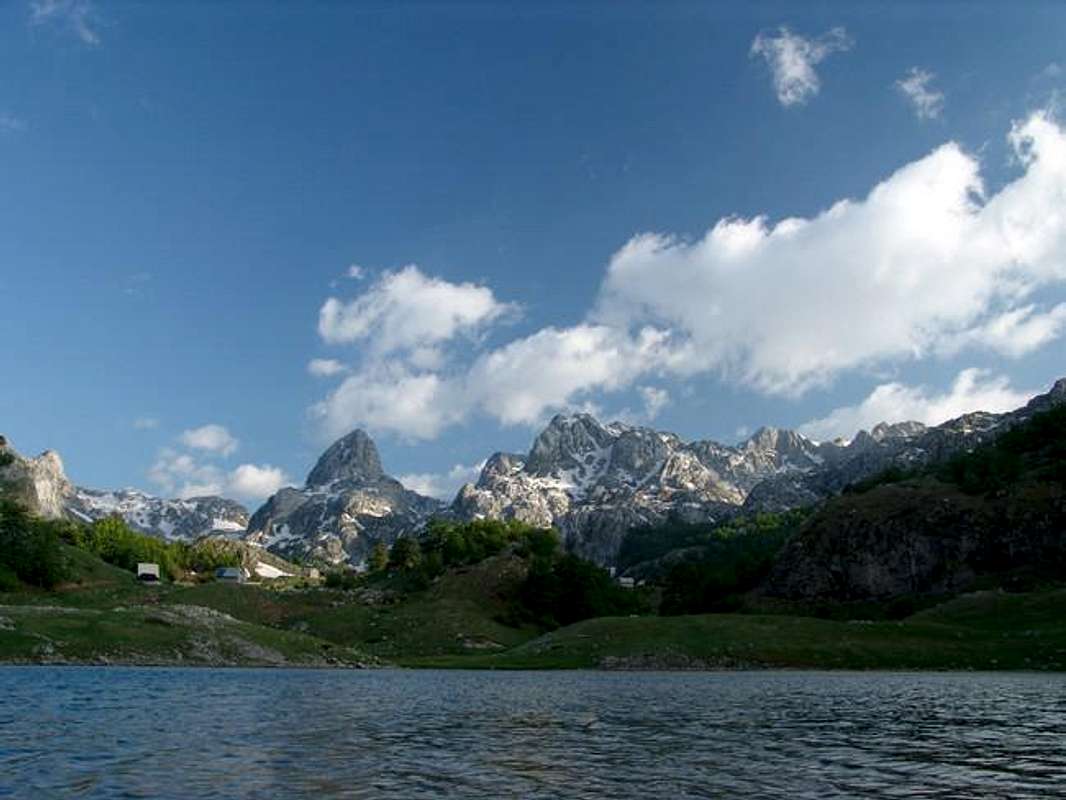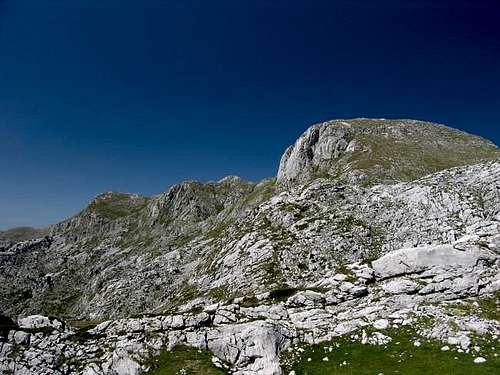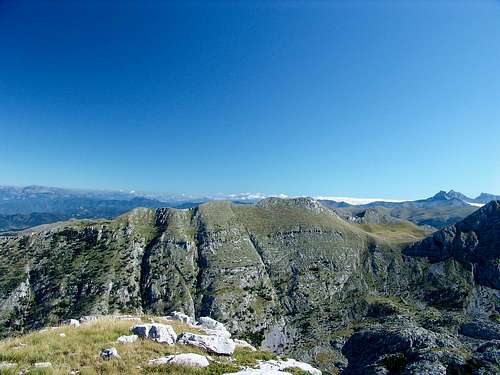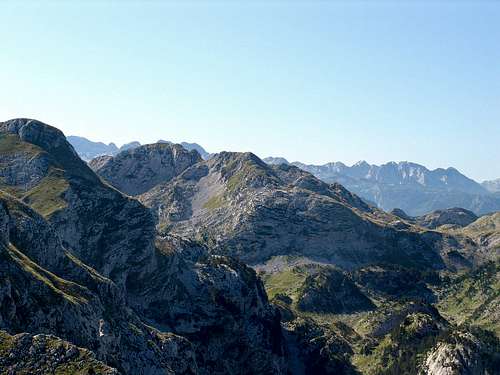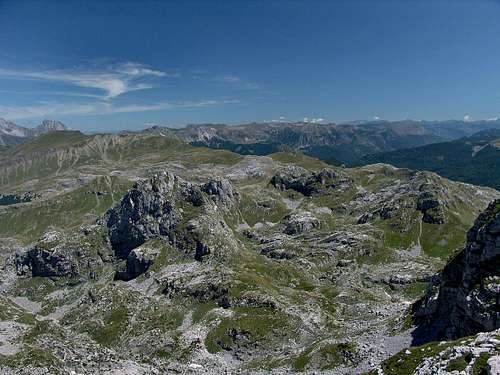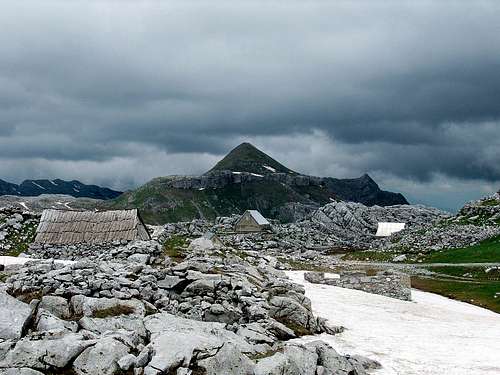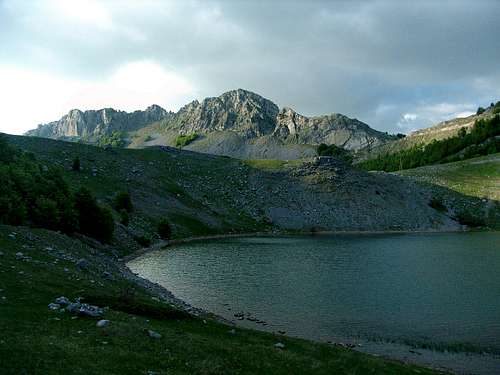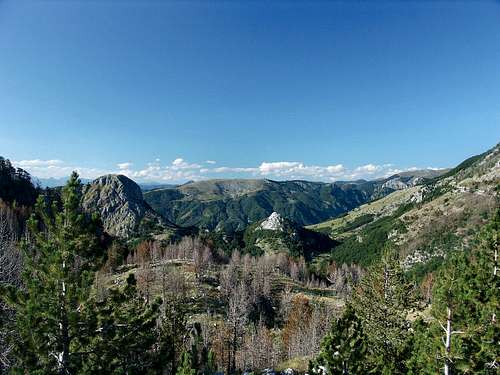-
 53924 Hits
53924 Hits
-
 91.75% Score
91.75% Score
-
 36 Votes
36 Votes
|
|
Area/Range |
|---|---|
|
|
42.57530°N / 19.55760°E |
|
|
7165 ft / 2184 m |
|
|
What´s new on this Page
4 April 16th, 2005 – Initial set up of the page4 June 2nd, 2005 – Added link to new SP page: Maglič (Kučki)
4 November 1st, 2005 – Added link to new SP page: Surdup
4 May 24th, 2006 – Added link to new SP page: Žijevo (Žijovo)
4 July, 4th 2009. Žijovo - Kučke Planine, new similar page on the same mountain area added on SP.
Geographical Structure
Dinaric Alps 4 Central Belt 4 Površi i brda (Highlands and mountains) area of Montenegro 4 Kučke planineOverview
Bukumirsko jezero (Bukumir lake), at 1,443 mIt is almost untouched, pristine, remote and quiet. Region called Kučka krajina or sometimes Žijovo («the Region of Kuči» – a Montenegrin clan) situated north-east of Podgorica the capital of Montenegro, next to the Albanian border, is one of not so known gems of the Montenegrin Dinarids.
In fact this is a vast karstic plateau (povrs) from which more groups of summits, single mountain-like summits and mountains rise.
While some Montenegrin sources consider this group a western continutation of Prokletije mountain range (some Montenegrin Government papers even call them Kučke Prokletije, Prokletije of Kuči), because they share more similarities to neighbouring Malesija e Made and Prokletije/Bjeshet e Nemuna in Albania, the sources from other geographical schools and mountainering clubs, as well as old JNA (former Yugoslav National Army) maps keep the name Prokletije for central parts of Prokletije, only, namely to a montain range that stretch east of Cijevna river to Cakor mountain pass, not even counting NE extensions of the range over Hajla and Žlijeb mountains. Because of present status of three people-three opinions-three politics this page talks about Mountains of Kuči as a separate group, part of Montenegrin high karstic Povrsi i brda (High mountains and plateaus) region.
Along its western side, rivers of Moraca and Mala rijeka («Small river») and road Podgorica – Lijeva Rijeka – Verusa, make the limits of the area. River Cijevna and vast river valley of Zeta make south and southwerstern borderline of Kučka krajina (area of Kuči). To east, the area extends to the summits along Montenegrin-Albanian border and a smaller mountain ridge that enter into Albania (over Vermoshi) and finally, from the north side the first neighbour of Kučka krajina is Komovi mountain group.
Mountains of Kuči area are connected with ranges of central Prokletije at theirs´ northeastern side – starting east of Vila mountain and Rikavačko lake in Kučka krajina, and continuing over mountains of Vermosh in Albania and Maja e Grebenit (1,842 m) they meet Prokletije of Gusinje and Plav area (Trojan and Popadija) more to the east. On northern side Kuci mountains are connected to Komovi and Planinica-Mojan mountain ridge with another mountain ridge.
The physical features of Kučka Krajina Mountains show many traces of glaciation, as it is case for Prokletije mountain range. Also the relief of the group is very indented. Like the main part of Prokletije, which shape resulted from a colisiom between Dinaric and Sara-Pindus tectonic plates, the mountains in Kučka krajina too, deviate from usual Dinaric Alps´ NW-SE stretch and they stretch here in all directions – no dominant direction (see attached map – a chaotic disposition is visible there) .
The highest summit of Kucka Krajina Mountains is Surdup with 2,184 m. There are more than 15 summits higher than 2,000 meters here. Because the mountains/summits rise from already elevated undulating plateau you will not always have feeling of such hight when looking the mountains of the region. But despite the false feeling of their real height they show a full high-mountain physionomy – sharp tops, glacial ridges, glacial chasms, lakes and valleys. The wide glacier that stretched over the plateau of Kucka krajina in the older geological period was up to 200 meters thick.
Only northern, and even more, the southern parts of Kučka krajina mountains have more woods. The most of the region is woodless, a magnificent mix of wild carstic and glacial structures and features combined with nice green grassy pastures.
On some maps and some literature the whole area is also called Žijovo or Žijevo (read: Zhijevo) after one mountain (area) in the region. Though, many writers are trying to standardize theirs´ name, by more often using the name Kučka krajina mountains / The mountains of Kučka Krajina, or simply Kuči mountains (Kučke planine)..
Still partly preserved stock-breeding tradition on these mountains give pastoral and picturesque image to the region. Katuns (“katun”, singular), small clusters of shepherds´mountain huts, can be found throughout the area, though in smaller numbers than before.
A practical map of the highest part of Kuči Mountains that is mostly visited by mountaineers
The Structure of the Group
 The most recognisable groups/clusters of summits of Kucka Krajina Mountains are: The most recognisable groups/clusters of summits of Kucka Krajina Mountains are:1. Central Cluster: Treskavac-Surdup-Stitan-Toljevac-Torac, 2. South-western Section: Zijevo and Sila, 3. South-eastern Section: Krisitor to Vila and summits along Montenegrin-Albanian border, 4. Northern Section: Maglic mountain (it is not the same mountain as the one on border of Montenegro and Bosnia&Herzegovina!) Geomorphologically, the group can also include Albanian mountains north of river Cijevna (Albanian part of Vila, Prijun etc,...), and a branch south of Vermosh although these areas are even less known and less mountaineer-"exploited". I have included thas area as part of Southeastern Section of the GROUP. Also, the area west of Central Cluster and Southeastern Sections in direction of river Mala rijeka and all the way to Moraca river canyon are by most divisions of Montenegrin mountains a kind of no-man´s-land, not described and not mentioned. This area is also not mountaineer-"exploited" and rarely is defined as a part of Kucka krajina mountain group, although geomorphologically it can fit into it. Untill someone else or myself define that area more precisely or establish some moutaineering highlights there, I shall leave it undescribed and not consider it as a separate section of Kucka krajina mountains GROUP. Central Cluster
| ||||||||||||||||||||||||||||


